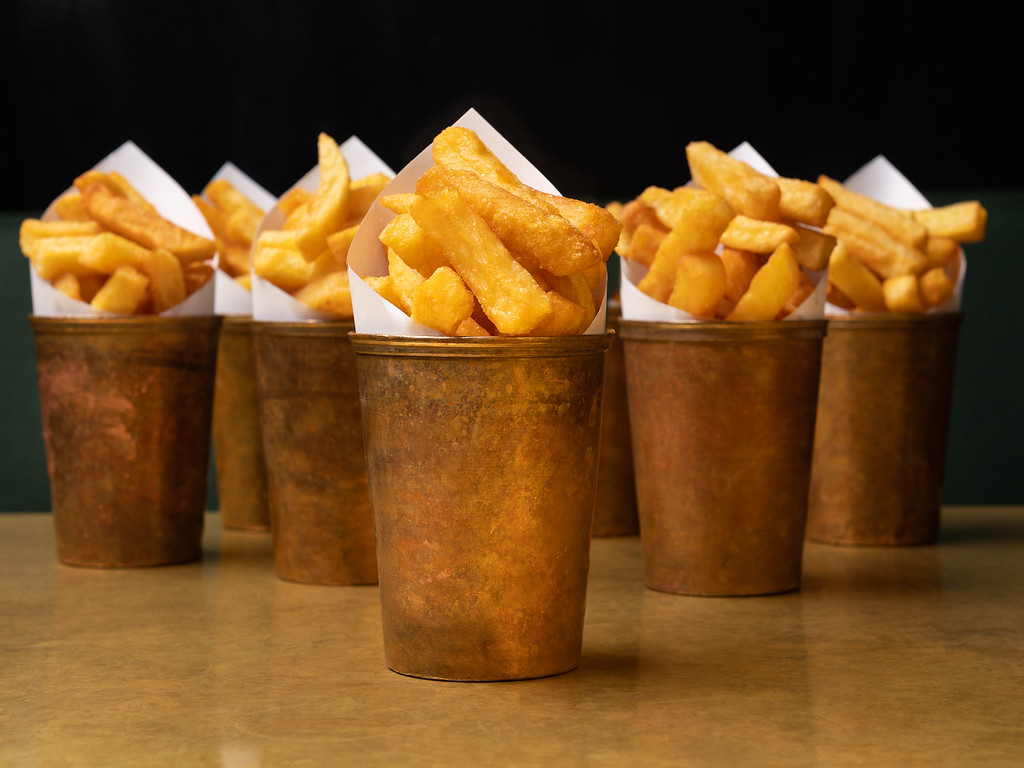We try to be as seasonal as possible. Those dishes that can change regularly do. The first days of Jersey Royals, asparagus, rhubarb and the like are cause for joy and celebration, months of absence making them taste even better. But there is one vegetable we must use year-round: the humble potato. A steak restaurant without chips is a strange thing indeed.
Fortunately, there are a few good chipping varieties, so making amazing chips almost all year round is possible.
But then, things get tough on the first day of Wimbledon (every bloody year). For two weeks in the summer, the sugar content gets particularly high due to the time the potatoes have been stored out of the ground (not some tennis-related hex). As a result, they brown more quickly and don’t crisp up in the usual way. We think we’ve found a solution each year: a fabled obscure potato variety that can save the day, or an adjusted method that leeches away excess sugars. None have solved it entirely, but each year we’re edging closer, heeding the life lesson of the great John McEnroe that every failure is an opportunity to try better next time. The potatoes can’t take all of the blame.
To get them to the chip stage, we follow a method pioneered by Heston Blumenthal which often crops up on menus now as triple-cooked chips. The three cooks in the name are boil, first fry and second fry.
It doesn’t sound very complicated, but the devil is in the detail as ever. When they’re boiled how much water is in the pot? How much salt? How many cold-chipped potatoes go in (altering the water’s temperature and thus the cooking time)? How long are they cooked for? A mistake at this stage, and you end up with potato soup.
They then need a post-boil ‘chuff’ to create extra-crispy cracks and fissures when fried. Not enough chuff and the surface stays as smooth as an oven chip; too much and they’re smashed to smithereens.
How are they then cooled? In a pile, they’ll keep on cooking. And then there are the two frys: how reliable is the fryer’s temperature gauge? How many chips are added at once? How clean is the oil? (Counter-intuitively, pure first-use oil isn’t great for chips.)
Even our final flourish – a spray of malt vinegar on the pass – can go wrong; if applied too early, it’s all but lost by the time the chips get to the table.
In short, something as seemingly straightforward as cooking chips are anything but, and at every stage, there’s scope for variation. A certain fast-food giant is said to get around the problem by using 16 different ingredients when making their fries, including the distinctly un-potato-sounding sodium acid pyrophosphate, dimethylpolysiloxane and tertiary butylhydroquinone. We’ll stick with spuds, and each time a minor inconsistency occurs, we’ll try to learn from it and get the next batch perfect.

